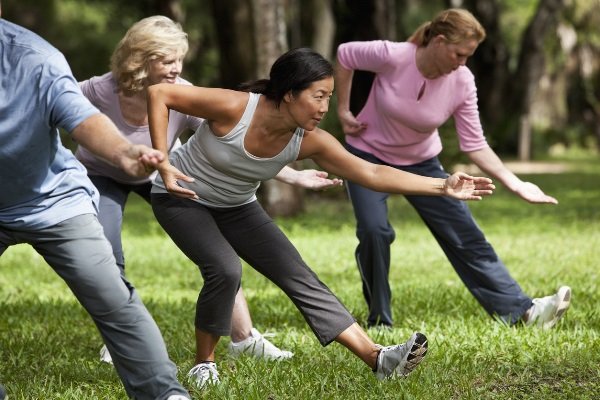Beginning your journey to self-improvement and mental wellness through the art of Tai Chi can be exciting and daunting. Although most commonly recognised as a relaxing exercise accompanied by images of old people gently moving arms and legs in a park, Tai Chi is actually an ancient Chinese Martial Art. While its efforts on providing health benefits and as a means of meditation are more commonly promoted, the strategic movements, slow and controlled breathing patterns and mental concentration required require much discipline and focus. This guide aims to break down and simplify that process to make it accessible to even those who wouldn’t know a Tai Chi player from a Tai Chi pot.
Finding the Right Place
Where can you do tai chi? You can practise tai chi anywhere, you can even do that at your own home. It’s also a good idea to find a quiet place, since you would require some focus to practise Tai Chi.
Which Style is Right for You?
Tai chi is available in different styles, the four most popular and widely taught today, are known by the families that developed them: Chen, Yang, Wu, and Sun. The styles differ in the switch of positions of the legs and their height in the forms, subtle changes in the movements, and the usage of the energy required to execute the moves. For beginners, the Yang Style is known for being gentle and flowing. It is ideal for starting tai chi for both the health benefits and you can learn the basic principles and immediately start gaining their benefits. The other styles Yang and Wu are also great for learning the basics. Their movements are only slightly different from Yang.
Get the Basics
Anyone wanting to practice tai chi should start with the basics. This entails learning a few simple movements as is paying specific attention to one’s breathing. Often, tai chi movements are named after animal actions or martial arts moves, which makes it easier for one to visualize and demonstrate them correctly.
Join a Class or Group
Another convenient option is to start Tai Chi on your own using books or online resources. But, in doing this, you won’t have anyone right there to tell you what is wrong and what is right. So, if you do start on your own it would be best to get into a class or a group.Being in a class or a group lets you have a professional instructor right there in front of you. She or he can jog you in to the right way to do something if you are doing it wrong.Having immediate feedback from a person can only help you more than a picture.
Practise Regularly
Regularly practising tai chi is necessary to becoming skilled at it. Even if you only have a few minutes of spare time every day, this will be enough to get you started. Gradually increase the amount of time as you can spare. If possible, go to a local tai chi class.
Seeing the Positive
With daily practise of Tai Chi you may notice considerable improvements in your physical health such as increased flexibility, balance and strength. Along with these great physical perks come the meditation aspect of the practise. This may include reductions in stress, calmer nerves, clearer more focused thinking, and an overall sense of well being.
Beginning a practise of Tai Chi is a step on a journey toward a healthier, more balanced life. By understanding the basics, finding your space and style and committing to regular practise you will soon start to experience the physical and mental benefits of this ancient art. Remember the journey of Tai Chi is one of learning and growth, the focus is the process, not the destination.

